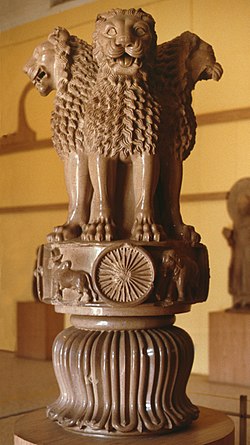This article has multiple issues. Please help improve it or discuss these issues on the talk page . (Learn how and when to remove these messages)
|

The Lion Capital Series were a series of currency notes issued after India declared its independence from Great Britain and used until the Reserve Bank of India (RBI) introduced the Mahatma Gandhi Series in 1996 with banknotes in denominations of 10 and 500 rupees, and were designed with the image of the Lion Capital of Ashoka, the National Emblem which replaced the George VI banknote series. The first banknotes printed after India achieved its independence was a 1-rupee note. [1] [2]













